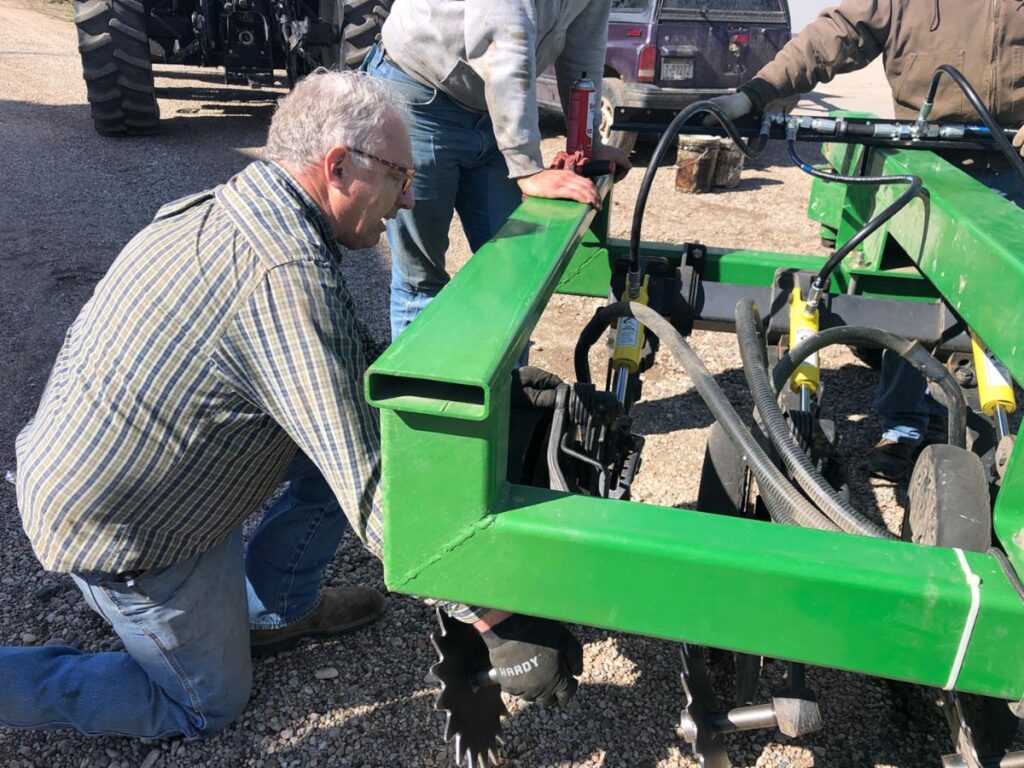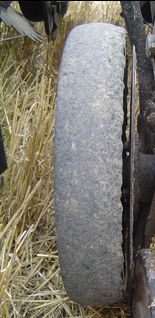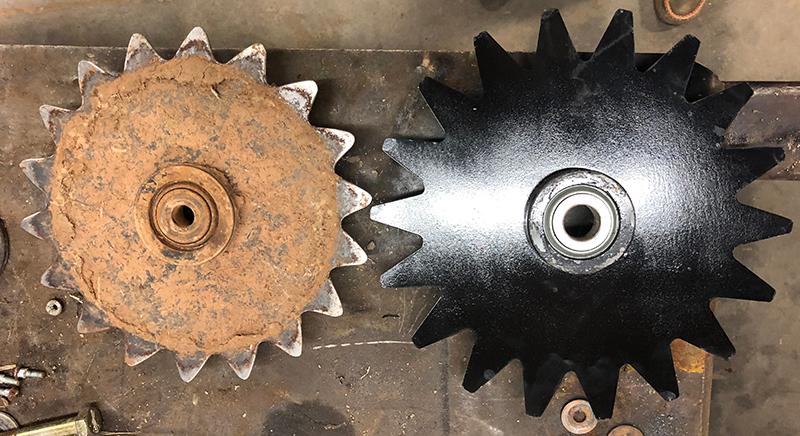by Ethan Begle
If you’re done seeding for the year, the best time to check what needs replaced is now before parking it until spring. There are some quick measurements to pull and assess the visual condition of some key components.
First measure the blade from the outside edge down to the outer edge of the hub without taking anything apart, 6 ¼” is brand new spec and replace blade at 5 7/8”. It is possible to remove the blade without taking the depth arm apart and only removing the gauge wheel. Set the depth to the lowest setting and disengage the firming arm spring. Hold the firming and closing arms up high enough to slide the blade over the depth arm and it will slide off.
It’s also important to ensure the row unit does not have side-to-side movement, over ¼” measured at the blade is too much. The main pin can be rotated 180 degrees (loosen retaining bolt, tap main pin out about 1”, then pipe wrench to rotate pin) as wear is always one-sided due to pull of row unit. If still more than ¼” play after rotating, the entire pin and bushings will need replaced. Be sure to re-torque the retaining bolt (very high spec) so the bushings don’t start to turn in the arm.
Check for play in the seed boot itself. Up and down movement over ¼” needs to be addressed. Pull the seed boot away from the blade and make sure it snaps back to check if the leaf spring still has enough tension. Lastly, at the seed boot check the seed flap for wear and tear as this little flap really helps to keep seeds in the furrow and not on top of the ground.
Gauge wheel tires get chewed up quickly in no-till stubble, especially fall seedings into freshly harvested residue. Chunks and cracks along the lip of the tire are the most important things to look for, as the lip of the tire holds the sidewall in place and prevents dry soil from falling around the seed. Pull up on the gauge wheel into planting position and spin the wheel to make sure it is contacting the blade at the rear where it exits the soil.
The closing arm should have no more than ¼” side to side movement to keep the closing wheel from tracking into the furrow. Play can develop in the bushings that need replaced, as well as replacing the washer and nut that holds the arm to the row unit. The firming arm also needs checked while play is not as important since the wheel centers itself in the furrow, the arm needs to move freely up and down. Thompson closing wheels should be replaced at 11.5” diameter when the spikes are getting too small to crumble the soil together.
Do these checks to have your drill ready for spring and take advantage of year end specials on parts. This check will give an idea of what needs replaced in the shop come winter, as it’s much better to have the parts in hand, if out of stock or shipping delays happen.



